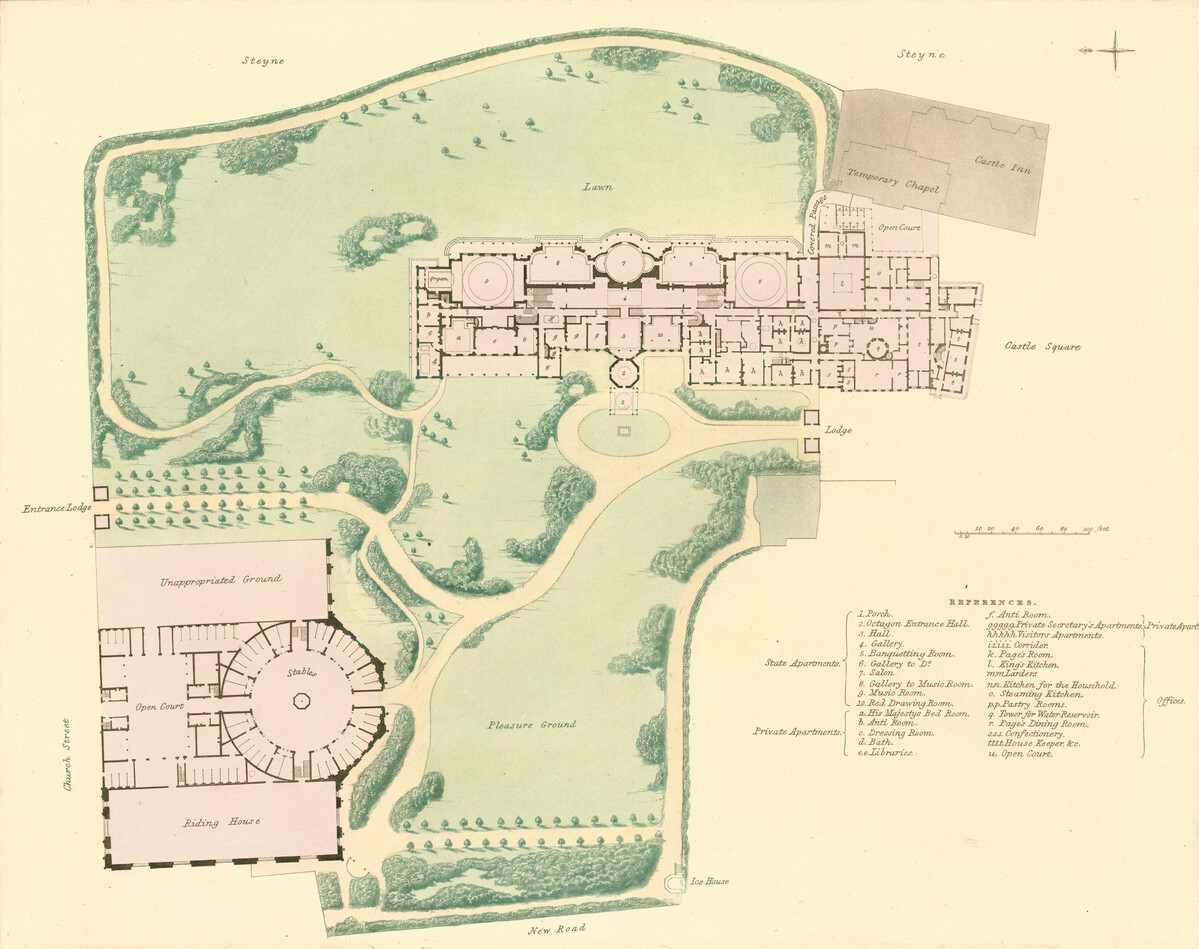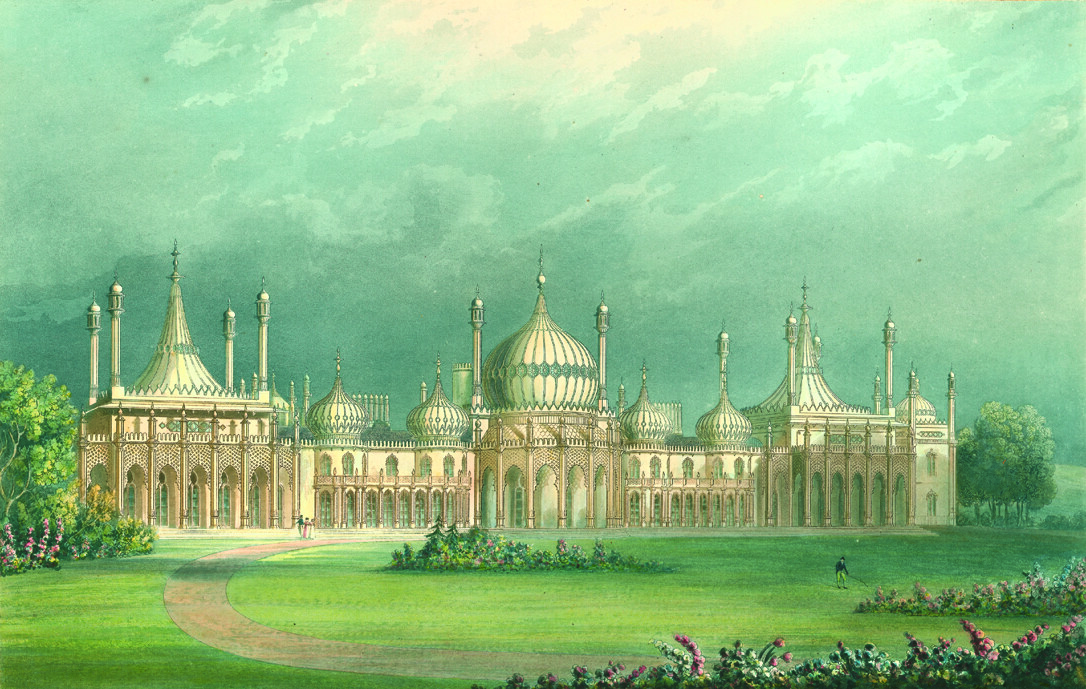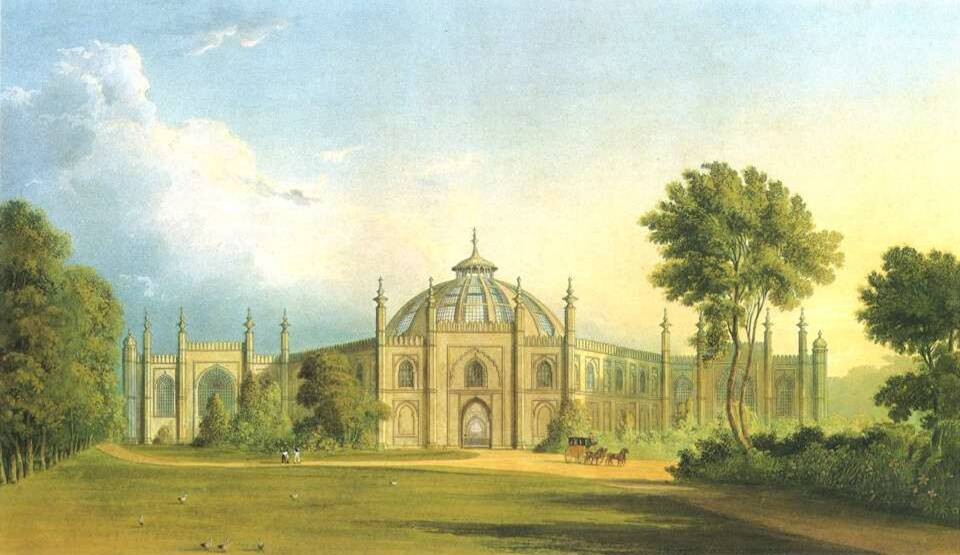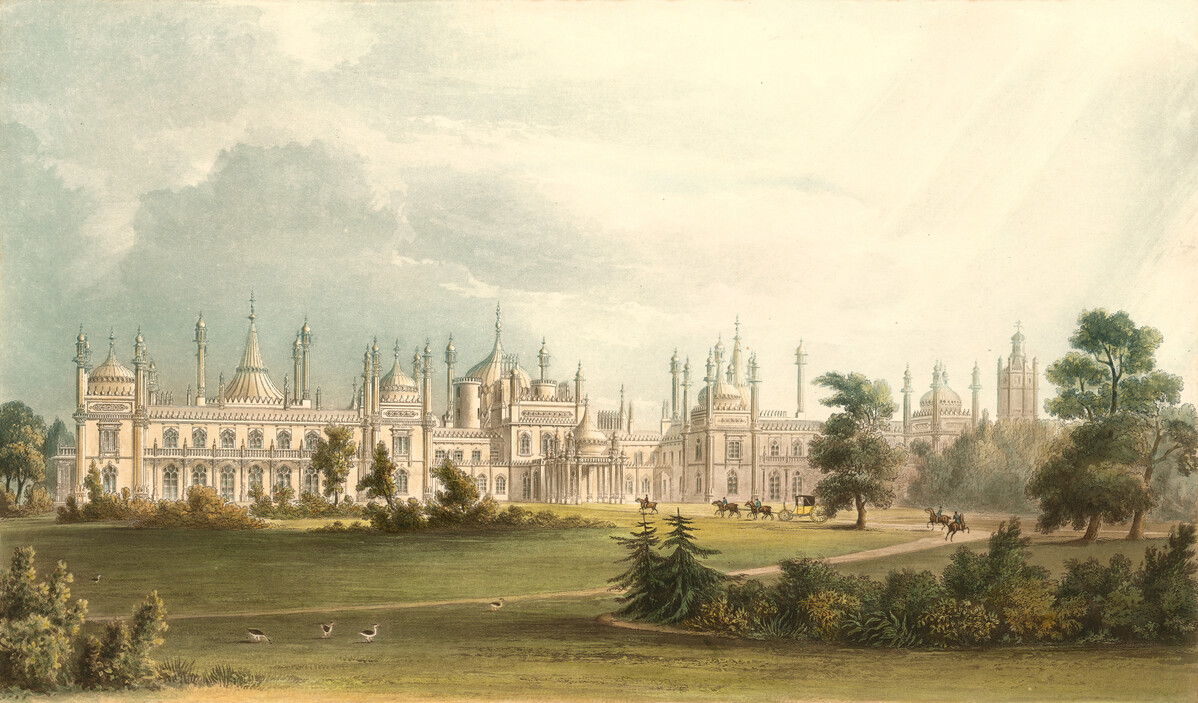
Glorious Regency Garden
The Royal Pavilion Garden was designed by John Nash (1752-1835) as a picturesque pleasure ground for King George IV (1762-1830). The Garden design reflected the revolution in landscape gardening that had begun in the 1730s. Straight lines and symmetrical shapes were replaced with curving paths, natural groups of trees and shrubs and picturesque views.
Nash is better-known as an architect rather than a landscape gardener, but he saw buildings and landscape as a picturesque whole and envisaged the design providing a succession of interesting views of the Pavilion and other estate buildings from within the Garden. Nash was no horticulturalist, and he was assisted in his plans for the Pavilion grounds by William Townsend Aiton (1766-1849), royal gardener and founder of the Royal Horticultural Society.

The Garden was also designed to be viewed from the Royal Pavilion itself. With its rows of windows opening directly on to the lawn, George’s palace resembled an overblown garden building looking out on a landscape which we take for granted, but which was then highly innovative: a combination of trees, shrubs and plants, arranged to provide year-round interest. The idea was to recreate in the garden the impression that its layout was an accidental effect of the surrounding countryside, and not a contrived and planned landscape design.
After the Pavilion was sold by Queen Victoria to the Brighton Corporation in 1850, new paths and seats were provided, and the grounds used for Victorian promenading. Contemporary plants that were fashionable at the time were placed in the borders. A tarmac road was installed through the middle of the landscape and its original groundbreaking historic character was being lost.

The reinstatement of Nash’s garden scheme began, in parallel with a major structural restoration of the palace itself, in the 1980’s. The whole restoration took around 20 years to complete. The primary goal of the restoration of the Garden was to enhance the experience of visiting this internationally significant historic site.
As a result of this, Nash’s serpentine drive now once again winds through the gardens from the William IV Gate towards the Royal Pavilion entrance, with irregular beds of mixed shrubs and flowers bordering the drive and winding paths. Trees and shrubs have been chosen from the original list supplied to George IV, mixed with modern equivalents of Regency varieties of herbaceous plants.
